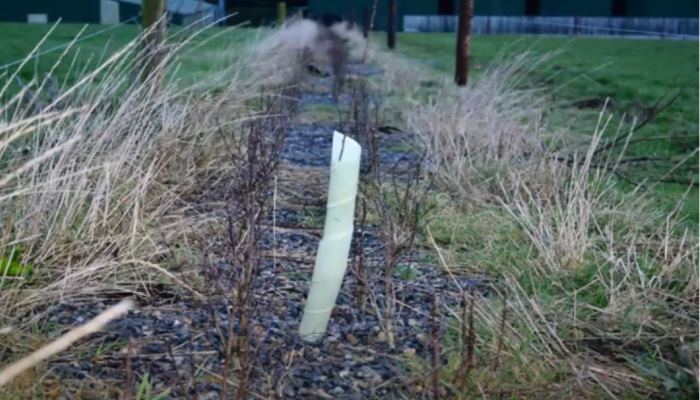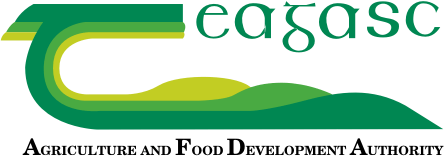09 December 2020
Hedges – A farmer’s perspective

Catherine Keena, Richard O’Brien, Teagasc and Aoife Leader, Walsh Scholar discuss mapping biodiversity on Donal Kavanagh’s farm. Donal, a dairy farmer, is one of 11 Future Farmers in the Teagasc / Glanbia knowledge transfer programme, promoting sustainable practices on farm to improve biodiversity
Donal Kavanagh is a dairy farmer milking 230 cows and producing both spring and winter milk near Baltinglass Co. Wicklow. Donal is one of eleven Future Farmers involved in the Teagasc / Glanbia Ireland knowledge transfer programme which prioritises the promotion of sustainable practices and helping farmers to implement changes that improve their environmental, economic and social sustainability. Encouraging the implementation of biodiversity management practices is a core aspect of this. Donal is also involved in an ongoing study by Walsh Scholar and UCD MAIS student Aoife Leader which aims to identify communication methods that are effective in bringing about positive changes in biodiversity management practices. A key aspect of this study has been the mapping of biodiversity features on Donal’s farm. The total percentage of biodiversity features on Donal’s farming platform is 6%. There are almost 9Km of hedges on Donal’s farm which make up 2% of the farming platform area.
A look inside the hedge
Donal highlights the importance of the hedges that are present on his farm. These hedges are important landscape features that provide shelter for stock, prevent the spread of airborne diseases, regulate waterflow and trap silt. They are also valuable biodiversity features. The hedges on Donal’s farm act as movement corridors and networks for nature that provide nesting sites and song posts for birds, roosting sites for bats, and cover from predators for small mammals and birds. Donal emphasises the variety of native species that can be found in the hedges around his farm such as whitethorn, blackthorn, dog rose, ivy and brambles. The hedges allow space for these native plants to grow which in turn provide a varied supply of food for pollinators and birds throughout the year.
Maintaining existing hedges
As a farmer Donal believes that it is important for him to maintain existing hedges on his farm. When it comes to managing mature hedges, Donal targets height in the hedges to ensure there is enough cover from predators above and below for hedge nesting birds. He also aims to shape these hedges into a triangular profile by side trimming and leaving a peak as high as possible at the top of the hedge. This move away from low, boxed shaped hedges will improve the quality of Donal’s hedges and their contribution to nature. In addition, Donal allows occasional thorn trees to mature along the hedge which then flower and fruit providing a valuable food source for pollinators and birds.
Managing a new hedge
Donal planted a predominantly whitethorn hedge two years ago and explains his management strategy for this hedge going forward. Firstly, Donal will to identify individual whitethorn plants to be retained as individual thorn trees. He will mark them with a tree guard so that these plants will eventually grow into mature whitethorn trees that will flower and fruit. For the rest of the hedge plants, the plan is to prune back the plants to ground level when dormant during the winter so that these whitethorn plants will produce multiple shoots increasing the density of the hedge at the base. In subsequent years he will cut this new hedge a just little above the level of the previous cut to ensure the hedge becomes dense and vigorous.
Plans for the future
Currently Donal’s average field size is 10ha. Average field size is proxy for the extent of linear biodiversity features such as hedgerows and watercourses and the target for this is 5ha. Donal plans to plant a new native hedge which will extend the connections and corridors for nature throughout the farming platform and contribute to a reduction in average field size.
Conversations with Contractors
To change hedge management practices, communication with the hedge cutting contractor is essential. Donal highlights the value of having a conversation with his hedge cutting contractor and explaining to him what he wants to achieve from the hedge cutting. From leaving some thorn trees uncut to shaping the hedges into a triangular profile – farmers need to make sure their contractor knows what they want.
https://www.teagasc.ie/animals/dairy/joint-programmes/glanbia/
To see all of the activity of Hedgerow Week follow this link https://www.teagasc.ie/environment/biodiversity–countryside/farmland-habitats/hedgerows/
